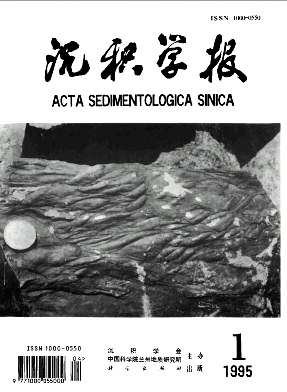Study of Sedimentary Facies in Reservoir Description
- Received Date: 1993-04-18
- Publish Date: 1995-03-10
Abstract: It is a fundamental work to study sedimentary factes or micro factes in reservoir description.In order to reveal the sizes and distribution of the reservoirs and to help the oil development,this Paper emphasizes that it is very important to apply integratedly geological,seismic, lOgging information to identify the depositional environments, factes or microfacies types of the reservoirs by means of computer program.However, the consideration and methods of sedimentary factes are different in the reservoir descriptions at different singes of Petroleum exploration or development.Because the reservoir description at the exploration stage is carried on under the situation that only a few drilled wells and their logging are available in which the industrial discovery has been found, the description is made mainly on seismic information.At this stage, study of sedimentary factes is first to establish the seismic sequences by the terminal characteristics of the reflections, toset up sequencial stratigraphic framework, to identify seismic factes types by structural nature of the reflections with each seismic sequence,then to transform the seismic factes into sedimentaey factes by the velocity spectrum,at last to classify the types of dePOsitional systems and to determine the distribution of the structural lithofacies belts.After a large number of geological, seismic and logging data has been received in the programming exploration, the reservoir description is conducted on some problems from the oil exploration and development.At this sarge the sedlimentary factes analysis is to integrate all the available information to reveal all the sub-factes and micro factes and their distribution in the seismic sub-sequence and then to correlate the micro factes of the sandbodies and the hydrocarbon accumulations.The reservoirs in Es of the Niuzhuang Oil field, the Dongying Depression, vary greatly in the lithology and factes, which leads to alternative recognizations in the stratigraphy correlation, sandbody genesis and distribution.In the study on the Oilfield, the authors firstly classified the Esi into 12 seismic factes and corresponding sedimentary factes,outlined six sand lobesof the delay, and then studied the formation and arrangement of the iso-chronous lobe and concluded that each lobe consisted of the main-fan,marginal fan, inter fan and slip zone.The main-fan controlled the distribution of oil and gas.The study of sedimentary factes in the reservoir description at the development stage represents fully using large volumes of drilling and logging data to analyse the microfacies of each sandbody in the devaloping sequences so that expound the anisotropy of the sandbody.In the research at the Zaoyuan Oilfield,the authors applied the pattern identification for the first time to auto classifying and correlating the reservoirs, then carried on the logging factes analysis and mapped sandbody distributions for the 48 layers in the 9 reservoir groups by means of the combination of the single-well factes analysis map, the cross-well section correlation,the iso-lines of sand/mud ratio and isopach map of the sandstones.Therefore, the research has established the sizes and distribution of all the sandbodies in the developing sequences and made solid foundation for enhancement of oil recovery.
| Citation: | Wang Weifeng, Jin Qiang, Xu Huaimin, Xin Quanlin. Study of Sedimentary Facies in Reservoir Description[J]. Acta Sedimentologica Sinica, 1995, 13(1): 94-101. |






 DownLoad:
DownLoad: